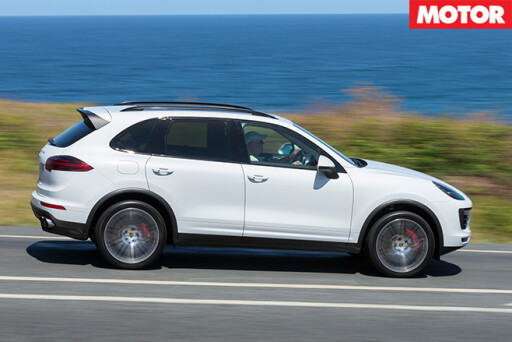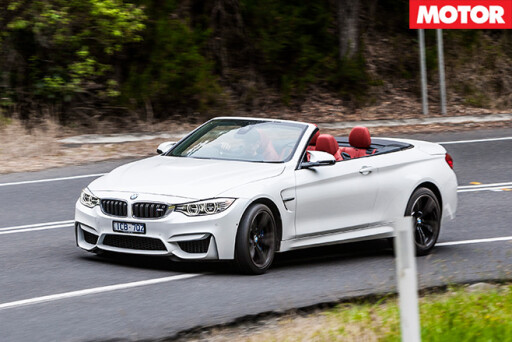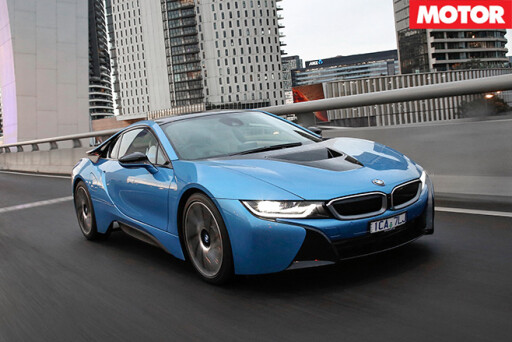
Our favourite cars are dying and it’s all for nothing – okay, so the cars themselves will continue, but the engines that power them will result in a very different fast car future.
You’ll be well aware that the turbo invasion has arrived; you can’t read about a new model without there being mention of Alfred Büchi’s nifty little compressor.
What began as a trickle has now turned into a tsunami. Soon, real estate in the naturally-aspirated graveyard will be more exclusive than Sydney’s Point Piper. BMW’s M5 was an early casualty, as were a variety of AMG Benzes, but now the writing is well and truly on the wall. Ferrari’s 458 replacement is boosted, and by the end of 2016 only Porsche’s GT motorsport models will be free of forced induction.
It’s not just the super sports sector that’s being affected, either. More prosaic metal like BMW’s sweet inline-six, the Porsche Cayenne’s golden-tonsilled V8 and the buzzy lump of hyperactivity that powered the last Renault Sport Clio have all bitten the dust. And for what? Fuel economy and emissions, that’s what. Well, I’m here to tell you that’s all rubbish.
 In its infinite wisdom, the European Union has declared that the average CO2 emissions of a car manufacturer’s entire range must not exceed 130g/km from 2015 – a base Ford Focus 1.6 currently emits a claimed 145g/km. That average figure falls to just 95g/km from 2021. According to the Australian Government’s Green Vehicle Guide, just 31 cars currently on sale in Australia fall below this threshold, and 12 of those are purely electric.
In its infinite wisdom, the European Union has declared that the average CO2 emissions of a car manufacturer’s entire range must not exceed 130g/km from 2015 – a base Ford Focus 1.6 currently emits a claimed 145g/km. That average figure falls to just 95g/km from 2021. According to the Australian Government’s Green Vehicle Guide, just 31 cars currently on sale in Australia fall below this threshold, and 12 of those are purely electric.
There’s good reason car makers are falling over themselves to meet these guidelines, though: the EU has stipulated that from 2019, for every g/km over the average, the car maker will be fined €95 (AU$139) per car registered! The VW Group sold almost 2.5 million cars in Europe last year – that’s one hell of a bill.
The problem is, it’s completely ridiculous, because the figures are a result of a test so unrepresentative of the real world, it might as well be conducted by hobbits in Middle Earth.
We’ll cover the exact process in a future issue, but suffice to say that if everyone drove in the manner described by the EU – or, locally, the Australian Design Rules – it would appear as if the world was in slow motion. Not even the most feather-footed grandma could hope to achieve the number so proudly displayed on the windscreen of every new car.
 Take our recent comparison of the BMW M4 vs Jaguar F-Type V6 S vs Porsche Boxster GTS for example. On paper, the turbo'd M4 hugs polar bears and re-plants forests by consuming just 8.7L/100km to the dirty, naturally-aspirated Porsche’s 9.0L/100km.
Take our recent comparison of the BMW M4 vs Jaguar F-Type V6 S vs Porsche Boxster GTS for example. On paper, the turbo'd M4 hugs polar bears and re-plants forests by consuming just 8.7L/100km to the dirty, naturally-aspirated Porsche’s 9.0L/100km.
In the real world, however, over almost 1000km of varied driving, the BMW consumed 12.1L/100km to the Porsche’s 10.2L/100km. And before you state the obvious, if anything the Porsche was driven harder than the BMW, with everyone who drove it keen to experience its gorgeous top-end howl.
The only thing this push to turbocharging is doing is widening the gulf between the official claims and what owners will actually achieve. Ironically, it’s the cars that benefit most that could spell the end of the current test by highlighting its farcical nature.
Because they’re allowed to start with fully charged batteries, plug-in hybrids are able to complete most of the test on battery power alone. In the case of the BMW i8, for example, this results in a claimed fuel figure of 2.1L/100km.
 BMW knows this is complete nonsense, to the point that it points out in the handbook that owners can reasonably expect somewhere between 6-9L/100km depending on the type of driving being done.
BMW knows this is complete nonsense, to the point that it points out in the handbook that owners can reasonably expect somewhere between 6-9L/100km depending on the type of driving being done.
Now, don’t get me wrong, in the right place – preferably under the bonnet of a Nissan GT-R or Subaru WRX STI – turbos are great. But, by and large, when it comes to driving thrills, naturally-aspirated engines are better.
Performance cars will continue to get faster and be great to drive, but the more we sample this new forced-induction future, the more we feel that for most manufacturers, the true heroes, the ones that will be remembered in decades to come, have already been built. And all because of a group of paper-pushing bureaucrats whose idea of driving pleasure is finding a park outside the local coffee joint.

COMMENTS